Balancing act: step into Pezo von Ellrichshausen’s inverted pyramid home
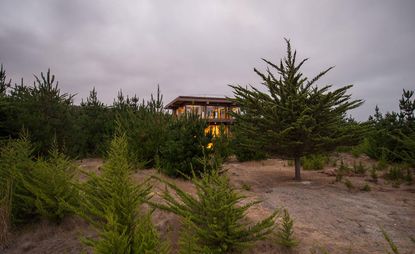
When called upon to build a house for an eco-conscious couple within the seaside Chilean town of Navidad, local firm Pezo von Ellrichshausen, headed by Mauricio Pezo and Sofia von Ellrichshausen, duly obliged and went on to produce Nida House, a monolithic concrete creation with an unusual inverted layout.
The clients, a young couple in the fields of the arts and technology began the project a few years ago. It was just the two of them back then, but they had a baby girl during the build, which meant the house needed to be able to accommodate their small, but growing, family. Another of the couple’s key concerns was to be able to enjoy the property’s verdant surroundings and to have views over the distant neighbouring ocean without sacrificing a single tree.

Take an interactive tour of Nida House
Its structure poured in situ, the home is composed of a vertical succession of platforms, which grow in size as the height increases, arguably a bold choice for a country susceptible to earthquakes. Its solid construction however, says otherwise.
The inverted nature of the property was not concieved for the sake of aesthetics alone, the architects also hoped to create an alternative and more interesting interior program than the typical residential property; the ground and second floors host the house’s sleeping areas, with living and dining found on the property’s top tier. The lowest floor is divided into quarters; the middle section partitioned diagonally by furniture. In contrast, the topmost floor was left completely open plan.
Meanwhile, the presence of the trees offers changing vistas as one moves up in the house, from trunks, to foliage, finally reaching a stunning panoramic view that stretches across the forest and into the sea.
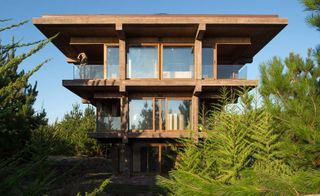
The owners, a young couple working in the fields of technology and the arts, requested that the property’s verdant surroundings be preserved throughout the construction
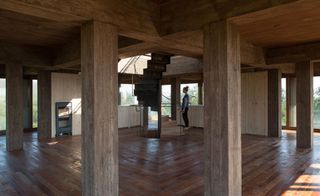
The home’s poured in situ structure is composed from a vertical succession of platforms, which grow in size as the height increases
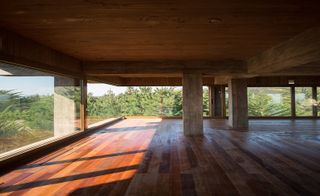
The inverted nature of the property was not chosen just for the sake of aesthetics. The architects also hoped to create an alternative proposal, moving away from the typical residential program
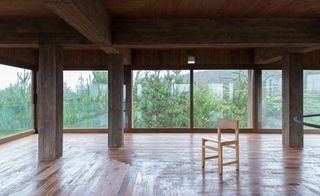
The trees surrounding the Nida House offer the residents a variety of changing vistas going up
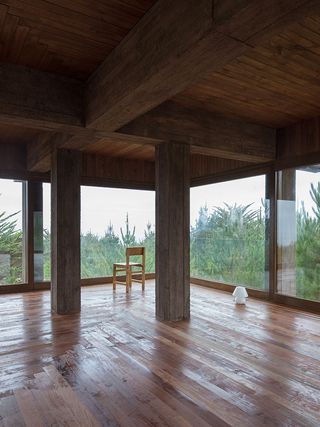
Found on the striking property’s top tier are the home’s open plan living and dining areas

A system of frames and pillars ensure this home is as solid as it is visually striking

The generous roof terrace offers stretching views over the nearby ocean
INFORMATION
Wallpaper* Newsletter
Receive our daily digest of inspiration, escapism and design stories from around the world direct to your inbox
For more information, visit Pezo von Ellrichshausen’s website
Ellie Stathaki is the Architecture & Environment Director at Wallpaper*. She trained as an architect at the Aristotle University of Thessaloniki in Greece and studied architectural history at the Bartlett in London. Now an established journalist, she has been a member of the Wallpaper* team since 2006, visiting buildings across the globe and interviewing leading architects such as Tadao Ando and Rem Koolhaas. Ellie has also taken part in judging panels, moderated events, curated shows and contributed in books, such as The Contemporary House (Thames & Hudson, 2018), Glenn Sestig Architecture Diary (2020) and House London (2022).
-
 LEVC’s L380 is a truly magnificent minivan
LEVC’s L380 is a truly magnificent minivanThe London Electric Vehicle Company’s L380, is a magnificent minivan designed for upscale long-distance travel, as the maker of the London Taxi branches out into all-purpose EVs
By Jonathan Bell Published
-
 Enjoy ocean and jungle bliss at Bespoke Tulum’s residences in Mexico
Enjoy ocean and jungle bliss at Bespoke Tulum’s residences in MexicoBespoke Tulum is an exclusive hospitality complex designed by Muro Rojo Arquitectura on Mexico’s Caribbean coastline
By Sofia de la Cruz Published
-
 In Van Cleef & Arpels’ high jewellery, the archival meets the au courant
In Van Cleef & Arpels’ high jewellery, the archival meets the au courantVan Cleef & Arpels pays tribute to its rich heritage with a captivating high jewellery collection
By Hannah Silver Published
-
 Giovanni Michelucci’s dramatic concrete church in the Italian Dolomites
Giovanni Michelucci’s dramatic concrete church in the Italian DolomitesGiovanni Michelucci’s concrete Church of Santa Maria Immacolata in the Italian Dolomites is a reverently uplifting memorial to the victims of a local disaster
By Jonathan Glancey Published
-
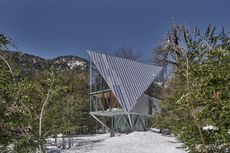 House in the Trees offers a bird's eye view of the Chilean forest
House in the Trees offers a bird's eye view of the Chilean forestHouse in the Trees by Max Núñez and Stefano Rolla is an angular Chilean cabin in woods, touching the ground lightly
By Ellie Stathaki Published
-
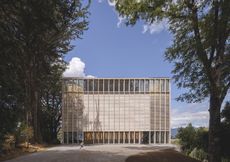 Chile’s Panguipulli Theatre brings purpose-built architecture to the learning experience
Chile’s Panguipulli Theatre brings purpose-built architecture to the learning experiencePanguipulli Theatre, a community-centred cultural space in Chile's Región de los Ríos, combines purpose-built architecture and learning
By Ellie Stathaki Published
-
 This Chilean beach house comprises a series of pavilions set beneath a wooden roof
This Chilean beach house comprises a series of pavilions set beneath a wooden roofWYND Architects has completed a Chilean beach house – a multigenerational family retreat, raised up above a site overlooking the Pacific Ocean
By Jonathan Bell Published
-
 The finest brutalist architecture in London and beyond
The finest brutalist architecture in London and beyondFor some of the world's finest brutalist architecture in London and beyond, scroll below. Can’t get enough of brutalism? Neither can we.
By Jonathan Bell Published
-
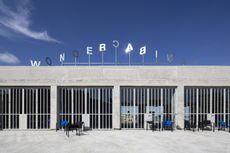 The Wonder Cabinet fosters creativity in Bethlehem
The Wonder Cabinet fosters creativity in BethlehemThe Wonder Cabinet in Bethlehem, Palestine is a not-for-profit production and cultural hub for creativity in the region
By Ellie Stathaki Published
-
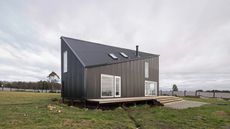 A modern barnhouse makes a faceted form on an exposed site in Southern Chile
A modern barnhouse makes a faceted form on an exposed site in Southern ChileEstudio Diagonal’s barnhouse project, Ridge House, is a stripped back private home that uses everyday materials and simple geometry to maximise interior space
By Jonathan Bell Published
-
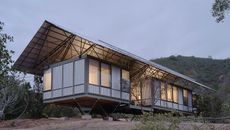 Industrialised building system prototype proposes solution for urgent housing needs
Industrialised building system prototype proposes solution for urgent housing needsWe examine an industrialized building system prototype proposal by Chilean architecture practices Ignacio Rojas Hirigoyen Architects and Cristian Dominguez Fernandez
By Ellie Stathaki Last updated